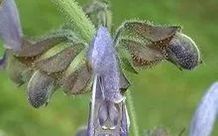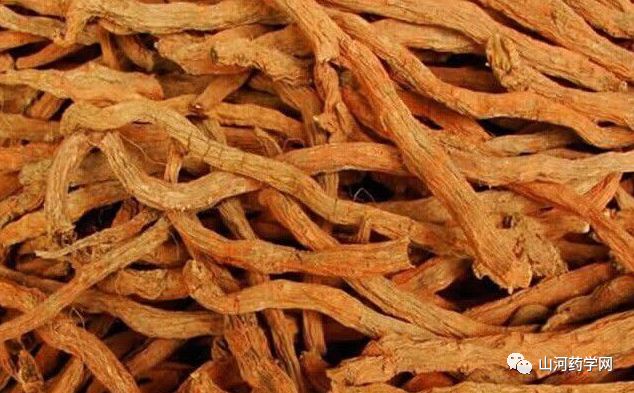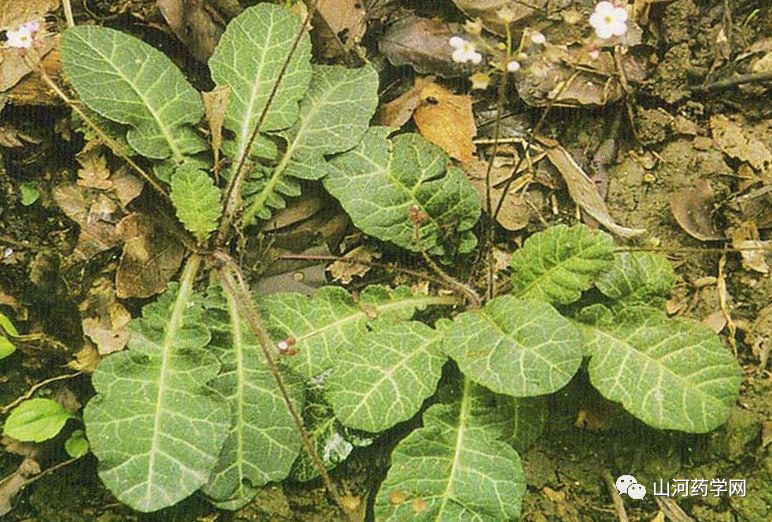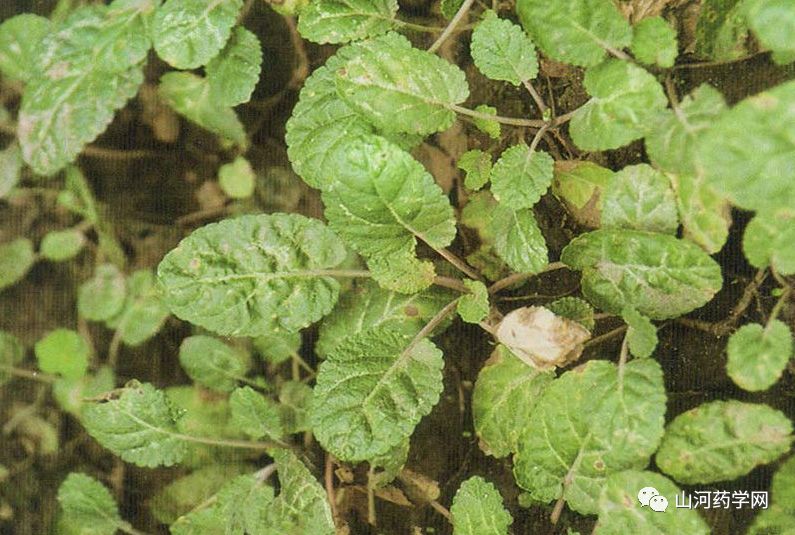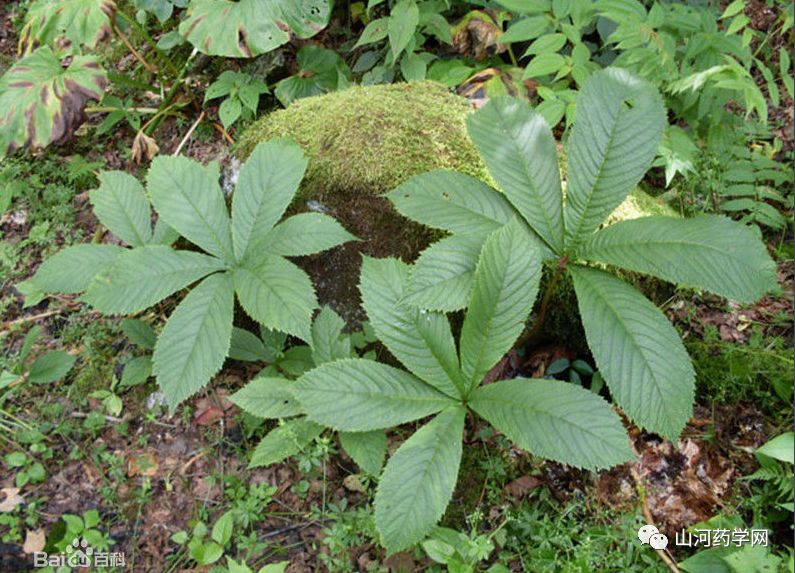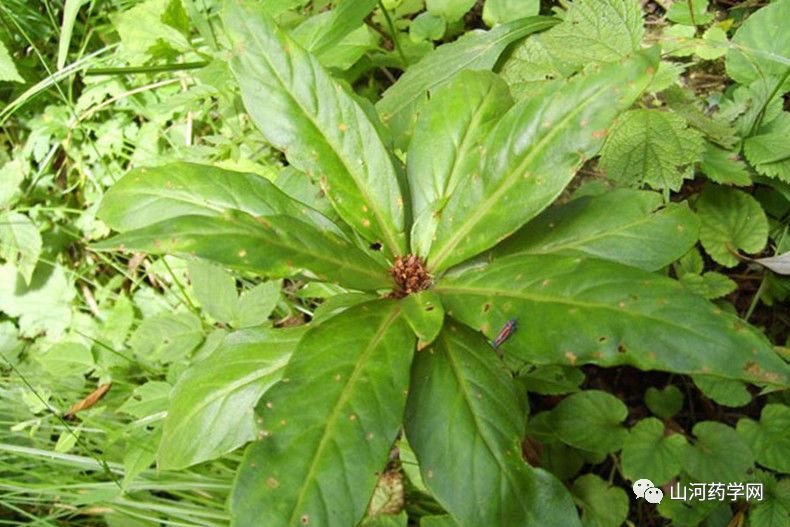| Dan Shen Dān Shēn | |
|---|---|
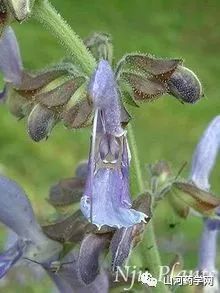
|
|
| Aliases | Hong Gen (Red Root), Da Hong Pao (Big Red Robe), Xue Shen Gen (Blood Ginseng Root), Xue Shan Gen (Blood Mountain Root), Hong Dan Shen (Red Dan Shen), Zi Dan Shen (Purple Dan Shen), Yi Shen (Also Ginseng), Mu Yang Ru (Wood Sheep Milk), Zhu Ma (Chasing Horse), Shan Shen (Mountain Ginseng), Zi Dang Shen (Purple Party Ginseng), Shan Hong Luo Bo (Mountain Red Radish), Huo Xue Gen (Blood Activating Root), Kao Shan Hong (Mountain Red), Hong Shen (Red Ginseng), Shao Jiu Hu Gen (Burnt Wine Pot Root), Ye Su Zi Gen (Wild Perilla Root), Shan Su Zi Gen (Mountain Perilla Root), Mi Guan Tou (Honey Jar), Duo Duo Hua Gen (Flower Root), Feng Tang Guan (Bee Sugar Jar), Qie Chan Cao (Qie Chan Grass), Chi Shen (Red Ginseng); Mu Yang Ru, Ben Ma Cao (Running Horse Grass), Jing Xuan Jiu Hu Gen (Selected Wine Pot Root) |
| Effects | Promotes blood circulation and alleviates pain, activates blood and regulates menstruation, clears the heart and relieves irritability. Used for irregular menstruation, dysmenorrhea, abdominal masses, stabbing pain in the chest and abdomen, hot bi pain, swelling and pain from sores, irritability and insomnia; liver and spleen enlargement, angina pectoris. |
| First Recorded In | Shen Nong Ben Cao Jing |
| Toxicity | Non-toxic |
| Meridian Affinity | Heart Meridian, Liver Meridian |
| Nature | Cold |
| Taste | Bitter |
Basic Information
[Source] This product is the dried root and rhizome of the dicotyledonous plant Salvia miltiorrhiza.[Nature and Taste] Bitter, slightly cold. Enters the Heart and Liver meridians.[Effects] Activates blood and regulates menstruation, promotes blood circulation and alleviates pain, cools blood and reduces swelling, clears the heart and relieves irritability, nourishes blood and calms the spirit.[Indications] Irregular menstruation, dysmenorrhea, abdominal masses, stabbing pain in the chest and abdomen, hot bi pain, swelling and pain from sores, irritability and insomnia; liver and spleen enlargement, angina pectoris.[Applications] Used for pain in the chest and ribs, rheumatic pain, abdominal masses, swelling and pain from sores, trauma pain, irregular menstruation, dysmenorrhea, postpartum pain, etc. It is effective for treating chest and rib pain, abdominal masses, as well as irregular menstruation and dysmenorrhea, often used in combination with Chuan Xiong (Chuanxiong Rhizome). In treating chest and abdominal pain due to Qi stagnation and blood stasis, it is often combined with Sha Ren (Amomum fruit), Tan Xiang (Sandalwood), and other herbs. Used for warm diseases with heat entering the Ying and blood levels, causing rashes and irritability. Commonly used with Xian Di Huang (Rehmannia Root), Shui Niu Jiao (Water Buffalo Horn), and Xuan Shen (Scrophularia). Used for palpitations and insomnia. Often combined with Suan Zao Ren (Sour Jujube Seed) and Bai Zi Ren (Platycladus Seed).[Dosage] Decoction, 9-15g. For promoting blood circulation and removing stasis, it is better to use wine-fried.[Precautions] Contraindicated with Li Lu (Veratrum). Use with caution in pregnant women.[Adverse Reactions] 1) Some patients may experience stomach pain, decreased appetite, dry mouth and throat, nausea and vomiting, related to Dan Shen’s ability to inhibit digestive fluid secretion. It is advisable to stop the medication and take drugs like Wei Shu Ping or Probenecid; in severe cases, subcutaneous injection of Atropine may be required. 2) Some patients with late-stage schistosomiasis and splenomegaly may experience upper gastrointestinal bleeding after taking large doses of Dan Shen. Dan Shen should be discontinued, and hemostatic agents and vitamins should be administered. 3) Dan Shen can cause allergic reactions, manifested as generalized skin itching, rashes, urticaria, and in some cases, chest tightness, shortness of breath, severe chills, dizziness, nausea, vomiting, restlessness, followed by pale complexion, cold limbs, sweating, decreased blood pressure, and even fainting or shock. Immediate intramuscular injection of epinephrine or dexamethasone and antihistamines such as Fenofibrate should be administered, along with traditional Chinese medicine Shen Mai San for adjustment.
Aliases of Dan Shen
[Aliases] Chi Shen (Red Ginseng), Shan Shen (Mountain Ginseng), Zi Dan Shen (Purple Dan Shen), Hong Gen (Red Root), Hong Nuan Yao (Red Warm Medicine), Zi Dang Shen (Purple Party Ginseng), Hong Shen (Red Ginseng), Xue Shen (Blood Ginseng), Xue Shen Gen (Blood Ginseng Root), Xue Dan Shen (Blood Dan Shen), Hong Dan Shen (Red Dan Shen), Chi Dan Shen (Red Dan Shen), Xue Sheng Gen (Blood Life Root), Xue Shan Gen (Blood Mountain Root), Mu Yang Ru (Wood Sheep Milk), Lian Ma (Connected Horse), Shan Hong Luo Bo (Mountain Red Radish), Huo Xue Gen (Blood Activating Root), Kao Shan Hong (Mountain Red), Shao Jiu Hu Gen (Burnt Wine Pot Root), Ye Su Zi Gen (Wild Perilla Root), Shan Su Zi Gen (Mountain Perilla Root), Da Hong Pao (Big Red Robe), Mi Guan Tou (Honey Jar), Feng Tang Guan (Bee Sugar Jar), Duo Duo Hua Gen (Flower Root), Que Chan Cao Gen (Que Chan Grass Root), Ben Ma Cao Gen (Running Horse Grass Root), Chang Shu Wei Cao Gen (Long Mouse Tail Grass Root), Shui Yang Cao Gen (Water Sheep Grass Root).[Product Name] Dan Shen. The best quality has thick roots, is dried, purple-red in color, and has no fibrous roots or root hairs.[Prescription Names] Dan Shen, Chi Shen, Zi Dan Shen, Chao Dan Shen (Fried Dan Shen), Jiu Dan Shen (Wine Dan Shen), Cu Dan Shen (Vinegar Dan Shen), Dan Shen Tan (Charred Dan Shen), Bie Xue Dan Shen (Turtle Blood Dan Shen), etc. In prescriptions, Dan Shen, Chi Shen, and Zi Dan Shen all refer to raw Dan Shen. Chao Dan Shen is Dan Shen slices fried until deep yellow with slight char spots, then taken out to cool before being used in medicine. Jiu Dan Shen is also known as Jiu Chao Dan Shen, which is Dan Shen slices sprinkled with yellow wine, steamed, and then gently fried for medicinal use, enhancing its blood-activating properties. Cu Dan Shen is also known as Cu Chao Dan Shen, which is Dan Shen slices sprinkled with rice vinegar, slightly steamed, and gently fried for medicinal use, enhancing its pain-relieving properties. Dan Shen Tan is Dan Shen slices fried until charred black, stored, and extinguished with water. After cooling, it is used in medicine, leaning towards hemostatic properties. Bie Xue Dan Shen is also known as Bie Xue Ban Dan Shen, which is Dan Shen slices mixed with an appropriate amount of turtle blood, dried, and then used in medicine, leaning towards nourishing blood.
Varietal Verification
Dan Shen was first recorded in the Shen Nong Ben Cao Jing, classified as a superior herb. Subsequent herbal texts have also included it. Wu Pu Ben Cao states: “The stem flowers are small, square like a stem (i.e., white perilla), hairy, the root is red, purple in April, and the roots are harvested in March and May, dried in the shade.” Ben Cao Tu Jing states: “In February, seedlings grow, about one foot high, with square stems, green in color. The leaves grow opposite, like perilla but hairy, flowering in March, red-purple, resembling perilla flowers. The roots are red, as big as a finger, and over a foot long, with several roots per seedling.” Ben Cao Gang Mu states: “It grows everywhere in the mountains, with one branch and five leaves, the leaves are like wild perilla but pointed, green, and wrinkled. The small flowers form spikes like moth shapes, with fine seeds in the middle, and the root skin is red while the flesh is purple.” Based on the descriptions from various herbal texts, the main morphological characteristics are completely consistent with the currently used Lamiaceae Dan Shen, Salvia miltiorrhiza Bge.[Applications] Used for pain in the chest and ribs, rheumatic pain, abdominal masses, swelling and pain from sores, trauma pain, irregular menstruation, dysmenorrhea, postpartum pain, etc. It is effective for treating chest and rib pain, abdominal masses, as well as irregular menstruation and dysmenorrhea, often used in combination with Chuan Xiong. In treating chest and abdominal pain due to Qi stagnation and blood stasis, it is often combined with Sha Ren, Tan Xiang, and other herbs. Used for warm diseases with heat entering the Ying and blood levels, causing rashes and irritability. Commonly used with Xian Di Huang, Shui Niu Jiao, and Xuan Shen. Used for palpitations and insomnia. Often combined with Suan Zao Ren and Bai Zi Ren.[Dosage] Decoction, 9-15g. For promoting blood circulation and removing stasis, it is better to use wine-fried.[Precautions] Contraindicated with Li Lu. Use with caution in pregnant women.[Adverse Reactions] 1) Some patients may experience stomach pain, decreased appetite, dry mouth and throat, nausea and vomiting, related to Dan Shen’s ability to inhibit digestive fluid secretion. It is advisable to stop the medication and take drugs like Wei Shu Ping or Probenecid; in severe cases, subcutaneous injection of Atropine may be required. 2) Some patients with late-stage schistosomiasis and splenomegaly may experience upper gastrointestinal bleeding after taking large doses of Dan Shen. Dan Shen should be discontinued, and hemostatic agents and vitamins should be administered. 3) Dan Shen can cause allergic reactions, manifested as generalized skin itching, rashes, urticaria, and in some cases, chest tightness, shortness of breath, severe chills, dizziness, nausea, vomiting, restlessness, followed by pale complexion, cold limbs, sweating, decreased blood pressure, and even fainting or shock. Immediate intramuscular injection of epinephrine or dexamethasone and antihistamines such as Fenofibrate should be administered, along with traditional Chinese medicine Shen Mai San for adjustment.
Various Discussions
1. Tao Hongjing: Dan Shen, many people in my time took it and had red eyes, so it should be hot in nature, but now it is said to be slightly cold, which may be a mistake.2. Gang Mu: Dan Shen, according to Fu Ren Ming Li Lun, Si Wu Tang treats women’s diseases, regardless of pre- or post-natal, and the amount of menstrual flow, can be used universally, but only Dan Shen powder is used for the same indications. This is because Dan Shen can break up old blood, replenish new blood, stabilize pregnancy, expel dead fetus, stop bleeding from stagnation, and regulate menstrual flow, its function is similar to that of Dang Gui, Di Huang, Chuan Xiong, and Shao Yao.3. Ben Cao Jing Shu: Dan Shen, in the Ben Jing, is bitter and slightly cold; Tao says it is hot and non-toxic, observing its main effects on the heart and abdomen, causing gurgling sounds in the intestines like flowing water, cold and heat accumulation, breaking up symptoms and removing masses, it seems to be a slightly cold medicine; it stops irritability and fullness, benefits Qi, and according to the Bei Lu, nourishes blood, removes stubborn diseases in the heart and abdomen, strengthens the waist and spine, and alleviates leg pain, removing wind and heat, long-term use is beneficial.4. Ben Cao Hui Yan: Dan Shen is good for treating blood-related issues, removing stagnation and generating new blood, regulating menstruation and smoothing the meridians. It is indicated for both men and women with symptoms of vomiting, bleeding, dysuria, and excessive menstrual bleeding, or when the Chong and Ren meridians are unbalanced, leading to fetal movement issues, or postpartum irregularities, or blood stasis causing pain in the joints, or menstrual blockage causing lower abdominal pain, or liver and spleen stagnation causing irregular heat, or masses causing bloating and obstruction, or hernias causing irregular pain, or leg and knee pain making it difficult to walk, or gas retention in the abdomen causing gurgling sounds, or blood vessel obstruction causing red eyes, thus Ming Li Lun attributes the effects of Dan Shen to the four substances. It nourishes and generates blood, functions similarly to Dang Gui and Di Huang, regulates and consolidates blood, is as effective as Shao Yao, removes stasis and generates new blood, and is particularly useful for women’s diseases, regardless of pre- or post-natal, can be used regularly.5. Ben Jing Feng Yuan: Dan Shen in the Ben Jing treats evil Qi in the heart and abdomen, causing gurgling sounds in the intestines like flowing water, all due to blood stasis accumulating and transforming into water. Stopping irritability and benefiting Qi means that when the stasis is removed, the irritability improves, and the righteous Qi is restored.6. Ben Cao Qiu Zhen: Dan Shen, the text states it can enter the heart and break stasis, which fully describes the efficacy of Dan Shen. However, it is also discussed that it can generate new blood, stabilize pregnancy, regulate menstruation, relieve irritability, nourish the spirit, and treat all wind-related issues, excessive bleeding, abdominal masses, red eyes, hernia pain, and swelling and pain from sores, all of which are due to its ability to remove stasis, indicating that it can treat all diseases, not that it can truly generate new blood, stabilize pregnancy, or nourish the spirit.7. Chongqing Tang Sui Bi: Dan Shen promotes blood circulation, suitable for blood heat and stagnation, thus it is a key medicine for regulating menstruation and postpartum recovery. If menstruation is early or absent, and blood is insufficient to nourish the fetus, leading to fetal instability, or if postpartum blood flow is smooth, one should not be misled by the claims of its effects being similar to the four substances, as the four substances are primarily for treating blood-related diseases, not for nourishing blood. Shi Wan has already clarified this. As for the claim of nourishing the heart, it is not like Goji berries or Longan, which can truly nourish heart deficiency; since the heart houses the spirit and governs blood, if the heart fire is too active, the spirit is restless, Dan Shen clears the internal heat of the blood, thus calming the spirit; when the spirit is calm, the heart benefits. Any warm or hot evil that enters the Ying level should use it, this is also the meaning. If the evil is in the Qi level and misused, it will instead draw the evil into the Ying level, which must be used with caution.8. Ben Cao Zheng Yi: Dan Shen, the Ben Jing states it is slightly cold, Tao Hongjing has doubted this, and Miao Zhongchun also questioned it, until Zhang Shican changed it to slightly warm.9. Ben Jing: Main effects include treating evil Qi in the heart and abdomen, causing gurgling sounds in the intestines like flowing water, cold and heat accumulation; breaking symptoms and removing masses, stopping irritability, and benefiting Qi.10. Wu Pu Ben Cao: Treats abdominal pain.11. Bei Lu: Nourishes blood, removes stubborn diseases in the heart and abdomen, strengthens the waist and spine, alleviates leg pain; removes wind and heat, long-term use is beneficial.12. Tao Hongjing: Soak in wine and drink it, treats wind-related pain.13. Yao Xing Lun: Treats weak legs, pain, and evil; treats abdominal pain, causing gurgling sounds.14. Ri Hua Zi Ben Cao: Nourishes the spirit and calms the mind, opens the meridians. Treats cold and hot labor, joint pain, and paralysis of the limbs; drains pus and relieves pain; promotes muscle growth; breaks up old blood and replenishes new blood; stabilizes pregnancy and expels dead fetus; stops bleeding and regulates women’s menstrual irregularities, blood evil causing irritability; treats sores, scabs, goiters, and toxic swellings, as well as headaches, red eyes, and heat-induced mania.15. Dian Nan Ben Cao: Nourishes the heart and calms the spirit. Treats forgetfulness and anxiety, and insomnia.16. Gang Mu: Activates blood and opens the heart meridian. Treats hernia pain.17. Yunnan Chinese Herbal Selection: Activates blood, disperses stasis, calms and relieves pain. Treats irregular menstruation, dysmenorrhea, rheumatic pain, uterine bleeding, vomiting blood, and breast inflammation.18. Ben Cao Xin Bian: Dan Shen, bitter in taste, slightly cold in nature, non-toxic. Enters the Heart and Spleen meridians. Specializes in regulating meridians, alleviating joint and muscle pain, generating new blood, removing stagnant blood, stabilizing pregnancy, breaking up masses, and stopping bleeding. Alleviates leg pain and reduces eye redness. Dispels evil spirits and nourishes the righteous Qi, also effective for treating gurgling sounds in the intestines. It can only assist, not be the main medicine; it can nourish or attack depending on its use, and is indispensable in the herbal cabinet. Its efficacy is particularly significant before and after childbirth, generally more is used before childbirth and less after, leading to more successes and fewer failures.
Nutritional Value
Herbaceous plant of the Lamiaceae family, the root and rhizome of Dan Shen. Grown in Jiangsu, Anhui, Hebei, Sichuan, and other regions. Harvested in spring and autumn, cleaned, and dried. Cut into slices or segments, used raw or wine-fried.[Properties] Bitter in taste, slightly cold in nature. Can activate blood circulation, remove stasis, cool blood, and calm the spirit.[References] Contains Danshenone, protocatechuic aldehyde, protocatechuic acid, salvianolic acid, vitamin E, etc.Can dilate coronary arteries, increase coronary blood flow, improve myocardial ischemia, infarction, and cardiac function, regulate heart rhythm, and dilate peripheral blood vessels, improving microcirculation; can enhance the body’s tolerance to hypoxia; has anticoagulant effects, promotes fibrinolysis, inhibits platelet aggregation, and prevents thrombosis; can lower blood lipids and inhibit the formation of coronary atherosclerosis; can inhibit or alleviate liver cell degeneration, necrosis, and inflammatory responses, promote liver cell regeneration, and has antifibrotic effects; can shorten the recovery period of red blood cells and hemoglobin, increase reticulocyte count, promote tissue repair, and accelerate fracture healing; has a central nervous system inhibitory effect; has antitumor effects; can enhance immune function; can lower blood sugar; and has inhibitory effects on various bacteria, including Mycobacterium tuberculosis.[Uses] Used for menstrual irregularities, dysmenorrhea, and postpartum abdominal pain due to blood stasis; angina pectoris due to coronary heart disease, atherosclerosis; chronic hepatitis, liver cirrhosis, abdominal masses or tumors; chronic pulmonary heart disease, bronchial asthma; palpitations due to insufficient blood supply to the heart or excessive heart fire, irritability, and insomnia.[Dosage] 9-15g per day. Decoction, wine infusion, or tea infusion.[Additional Formulas] 1. Tian Qi Dan Shen: 100g of San Qi, 15g of Dan Shen. Boil in water to extract the concentrated juice, add an appropriate amount of white sugar, and dry into granules. Each dose is g, dissolved in warm water for drinking. Alternatively, the two herbs can be ground into fine powder, each dose g, mixed with sugar, and brewed as tea. This formula uses both herbs to activate blood circulation and remove stasis, lower blood lipids, and increase coronary blood flow, used for angina pectoris due to coronary heart disease.2. Dan Shen Drink: 15g of Dan Shen, 5g each of Tan Xiang and Sha Ren. First, boil Dan Shen in water, then add Tan Xiang and Sha Ren, boil and drink. Can add an appropriate amount of brown sugar for flavor. This formula uses Dan Shen to activate blood circulation and remove stasis, while Tan Xiang and Sha Ren promote Qi and relieve pain, used for blood stasis and Qi stagnation causing abdominal pain. Currently also used for angina pectoris due to coronary heart disease.3. Dan Hong Wine: 60g of Dan Shen, 15g each of Hong Hua and Yue Ji Hua. Soak in 500g of white wine. Drink 1-2 small cups each time. This formula uses all three herbs to activate blood circulation and remove stasis, regulate menstruation, used for blood stasis causing menstrual irregularities, dysmenorrhea, and also for angina pectoris due to coronary heart disease.4. Dan Shen Yu Zhi Drink: 15g each of Dan Shen, Yu Zhu, and Shan Zha. Boil in water for drinking. This formula uses Dan Shen to activate blood circulation and remove stasis, and together with Yu Zhu and Shan Zha to lower blood lipids, used for angina pectoris due to coronary heart disease, atherosclerosis, and hyperlipidemia.
Traditional Chinese Medicine Story
Dan Shen is a commonly used traditional Chinese medicine, also known as Hong Gen (Red Root), Zi Dan Shen (Purple Dan Shen), and Xue Shen Gen (Blood Ginseng Root), named for its medicinal root which is purple-red in color. Additionally, it is colloquially referred to as “Dan Xin” (Red Heart), which is related to a touching story.It is said that a long time ago, in a fishing village by the East Sea, there lived a young man named “A Ming”. A Ming lost his father at a young age and lived with his mother, relying on each other. Growing up in the wind and waves, he developed excellent swimming skills, earning him the nickname “Little Dragon”. One year, A Ming’s mother suffered from a gynecological disease, often bleeding, and despite consulting many doctors, she was not cured, leaving A Ming in despair. At this time, someone mentioned that there was an unnamed island in the East Sea where a certain herb grew, with purple-blue flowers and red roots, and that boiling the roots of this herb could cure his mother’s illness. Hearing this, A Ming was overjoyed and decided to go to the unnamed island to gather the medicine. The villagers were worried for him, as the sea route to the unnamed island was fraught with hidden reefs and turbulent waters, with nine out of ten who attempted to go there perishing, akin to passing through the “Gates of Hell”. However, time was of the essence, and A Ming, eager to save his mother, resolutely set out to sea to gather the medicine.The next day, A Ming sailed out to sea. Using his superb swimming skills, he navigated around hidden reefs and rushed through dangerous rapids, finally passing through the “Gates of Hell” and successfully landing on the unnamed island. Once ashore, he searched for the herb with purple-blue flowers and red roots. Each time he found one, he quickly dug up its roots, and soon he had gathered a large bundle. Upon returning to the fishing village, A Ming diligently administered the medicine to his mother, and she quickly recovered.The villagers admired A Ming’s bravery in risking his life to gather medicine for his mother. They said that this herb embodied A Ming’s sincere heart, and thus named the red-rooted herb “Dan Xin”. Over time, the name evolved into “Dan Shen”.The “Dan Shen” mentioned in the story was first recorded in the Han Dynasty’s Shen Nong Ben Cao Jing. Traditional Chinese medicine believes that it is bitter and slightly cold, with effects of activating blood circulation, regulating menstruation, removing stasis and alleviating pain, clearing the heart and relieving irritability, and cooling blood and reducing swelling. It is suitable for various syndromes caused by blood stasis, blood heat, or a combination of blood stasis and heat, especially commonly used in gynecology, internal medicine, and trauma medicine for conditions associated with blood stasis and heat. According to the story, A Ming’s mother’s bleeding condition was likely caused by a combination of blood stasis and heat, hence the effectiveness of this herb. Today, this medicine is also made into injections and pills for treating cardiovascular diseases, showing good efficacy.Disclaimer:The content on this site is added and organized by users, for learning and reference purposes only. The information on the site may not be accurate, comprehensive, or up-to-date, and the content should not be considered the final basis for diagnosing or treating diseases.Shan He Pharmaceutical Networkreminds users that if you experience any discomfort, please seek medical attention promptly. Thank you for your support and love; we will strive to do better~!!!


